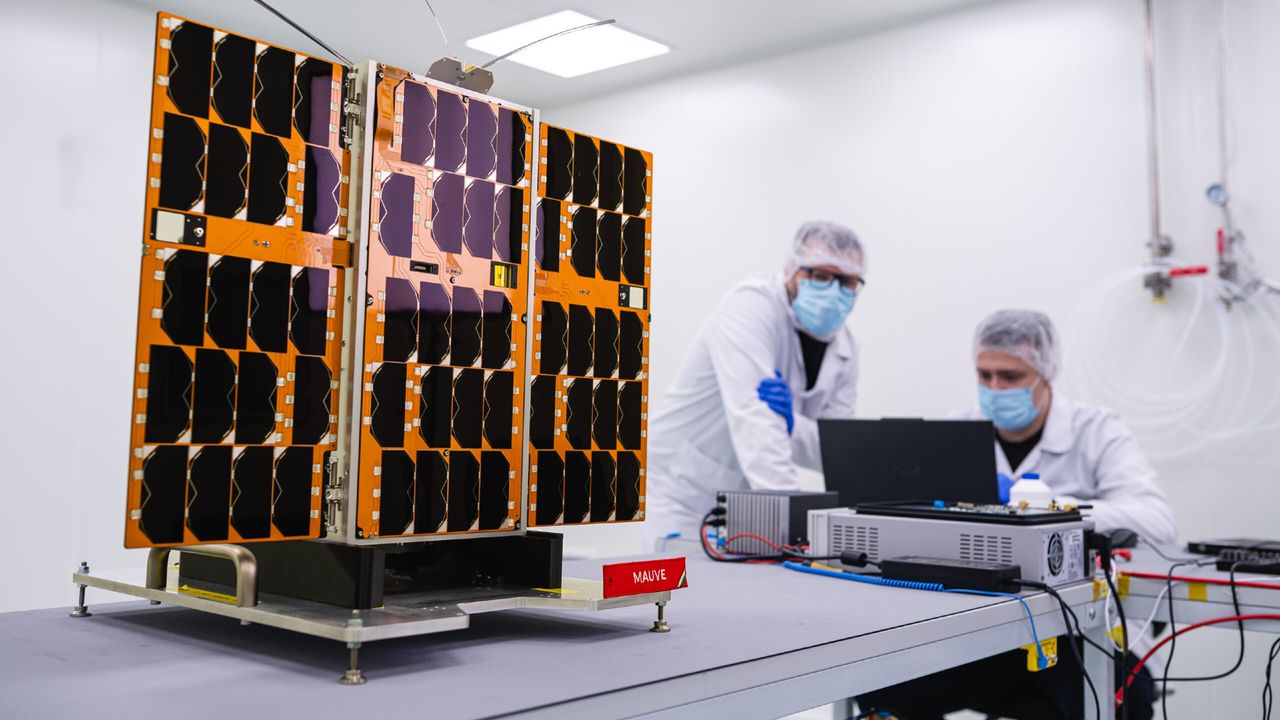Top Stories
World’s First Private Space Telescope Set to Search for Habitable Exoplanets

BREAKING: The world’s first commercial astronomy telescope, the Mauve telescope, is poised to revolutionize our understanding of the universe by searching for stars that may host habitable exoplanets. Developed by the London-based start-up Blue Skies Space, this innovative telescope will launch aboard SpaceX’s Transporter-15 mission, scheduled for November 2025.
This urgent mission comes as scientific interest in exoplanets surges. The Mauve telescope, which is about the size of a small suitcase, carries a modified ultraviolet spectrometer designed to monitor flaring stars. Understanding these stellar flares is crucial, as some stars emit intense bursts of radiation that could render nearby planets inhospitable.
“Mauve will allow us to understand the behavior of stars when they emit large amounts of energy,” said Marcell Tessenyi, founder and CEO of Blue Skies Space, in an exclusive interview with Space.com. This groundbreaking telescope aims to identify which stars are likely to support life by tracking hundreds of stellar flares.
The significance of this mission cannot be overstated. The last dedicated mission to observe stellar ultraviolet light, the International Ultraviolet Explorer, ended in 1996. With the Hubble Space Telescope often oversubscribed, researchers face long waits for observation time. Mauve aims to fill this gap with a low-cost solution, offering annual data subscriptions to scientists worldwide.
The potential impact of Mauve extends beyond mere observation. By pinpointing which stars may be damaging to life, researchers can focus their efforts on the most promising stellar systems.
The telescope will operate at an altitude of 310 miles (500 kilometers) above Earth for at least three years. With initial skepticism from the scientific community, interest has grown rapidly, with 19 universities already signing up for data access. This will enable them to receive information as early as next year.
While Mauve is Blue Skies Space’s first satellite, the company is already looking ahead to its next mission, the Twinkle satellite, which will analyze the chemical composition of exoplanets. It is expected to launch later this decade, weighing 330 pounds (150 kilograms) and featuring an 18-inch (45 cm) telescope.
“We finance the satellites upfront, put them into space, and recover costs over time through data sales,” Tessenyi explained. If successful, Blue Skies Space plans to expand its fleet, potentially launching a more advanced Mauve+ in the future.
The urgency of this mission is palpable, as scientists worldwide are eager to unlock the secrets of our galaxy. Stay tuned for updates as the launch date approaches and the potential for discovering habitable worlds draws nearer.
-

 Business1 week ago
Business1 week agoIconic Sand Dollar Social Club Listed for $3 Million in Folly Beach
-

 Health1 week ago
Health1 week agoPeptilogics Secures $78 Million to Combat Prosthetic Joint Infections
-

 Politics1 week ago
Politics1 week agoAfghan Refugee Detained by ICE After Asylum Hearing in New York
-

 Science1 week ago
Science1 week agoResearchers Achieve Fastest Genome Sequencing in Under Four Hours
-

 Lifestyle1 week ago
Lifestyle1 week agoJump for Good: San Clemente Pier Fundraiser Allows Legal Leaps
-

 Health1 week ago
Health1 week agoResearcher Uncovers Zika Virus Pathway to Placenta Using Nanotubes
-

 World1 week ago
World1 week agoUS Passport Ranks Drop Out of Top 10 for First Time Ever
-

 World1 week ago
World1 week agoRegional Pilots’ Salaries Surge to Six Figures in 2025
-

 Entertainment1 week ago
Entertainment1 week agoJennifer Lopez Addresses A-Rod Split in Candid Interview
-

 Science1 week ago
Science1 week agoMars Observed: Detailed Imaging Reveals Dust Avalanche Dynamics
-

 Top Stories6 days ago
Top Stories6 days agoChicago Symphony Orchestra Dazzles with Berlioz Under Mäkelä
-

 World1 week ago
World1 week agoObama Foundation Highlights Challenges in Hungary and Poland









